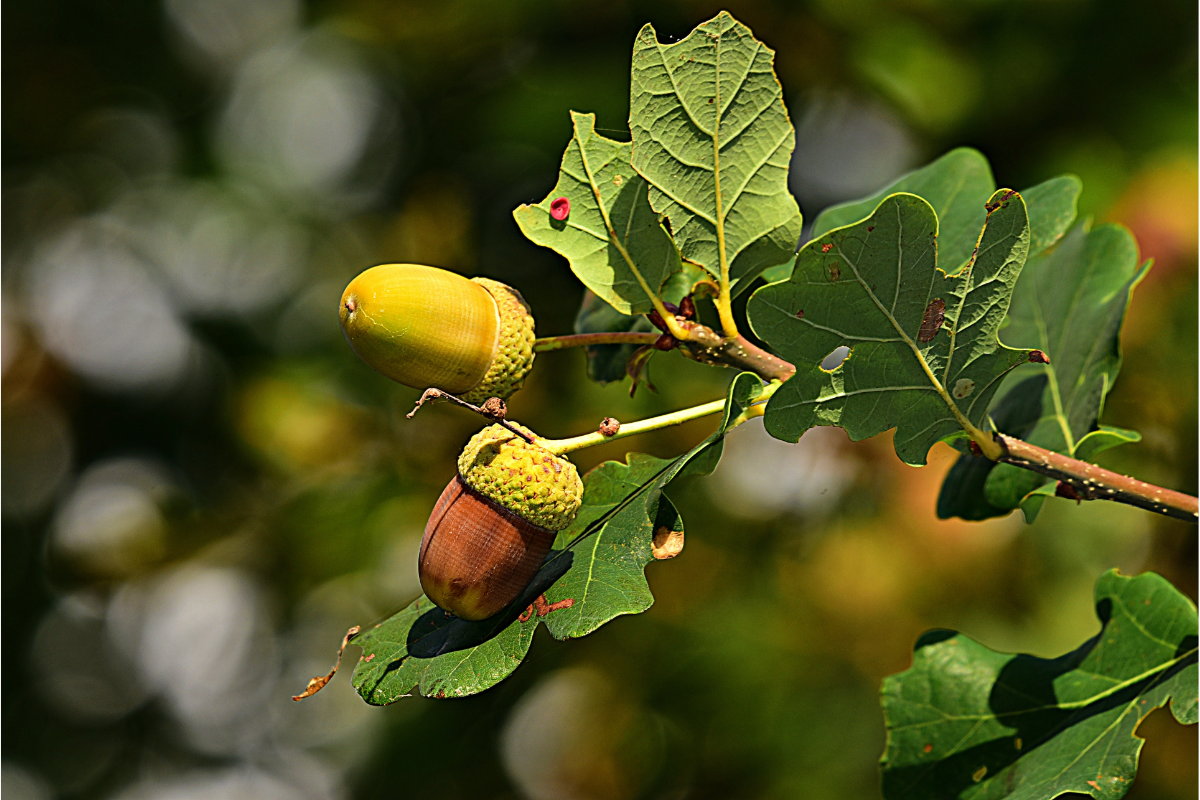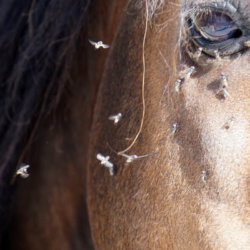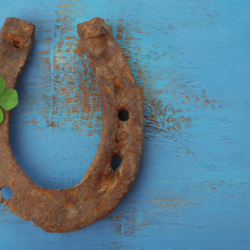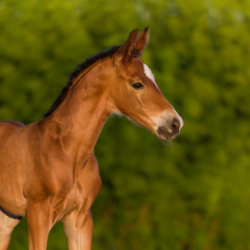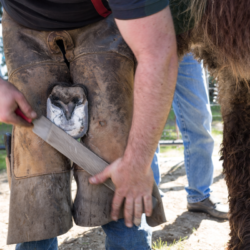The arrival of autumn is a risky time for horses, particularly because of the increased presence of acorns and young oak shoots in pastures. These elements, although natural, can be toxic to horses if ingested in large quantities. The tannins contained in acorns and oak leaves cause digestive and kidney problems, and sometimes serious poisoning.
A little botany…
Oak is a generic term for several hundred species belonging to the genus Quercus, in the Fagaceae family. These deciduous trees, which are very common in Europe, can grow to several dozen metres in height and live for several centuries. In France, there are three main species: the pedunculate oak(Quercus robur), the sessile oak(Quercus petraea) and the holm oak(Quercus ilex), the latter being found mainly in the Mediterranean region.
Oak leaves are characterised by their lobed shape and prominent midrib. The pedunculate oak has short-stalked leaves and elongated acorns borne on a stalk. The sessile oak, on the other hand, has long-stalked leaves and acorns attached directly to the branch.
Acorns, the fruit of the oak, are a frequent cause of poisoning in herbivores, particularly horses. Ingested in large quantities, the toxic tannins present in these fruits cause serious digestive problems. The pedunculate oak and the sessile oak contribute particularly to these cases of poisoning.
In France, these two species are widely found in forests, meadows and hedgerows, making a significant contribution to the natural landscape. Oak is widely used by carpenters and cabinet-makers for its quality. In the past, acorns were exploited as a food resource, but their toxicity still represents a major risk today, requiring increased vigilance to avoid poisoning animals.
Why are acorns toxic?
The toxicity of acorns is mainly due to the presence of hydrolysable tannins, the concentration of which varies according to several factors: the maturity of the acorn (the greener it is, the richer it is in tannins), the species of oak (the pedunculate oak produces more tannins than the sessile oak), and the age of the tree (young oaks are more dangerous).
These tannins have an astringent effect on the digestive mucosa, causing dryness and digestive problems in many animals. While some species, such as pigs and wild boar, can consume tannins in moderation, horses are particularly vulnerable because of their digestive systems. In horses, tannins can cause kidney and liver damage after ingestion.
The quantity ingested plays a crucial role: the more acorns horses consume, the greater the risk of developing serious symptoms. These symptoms include colic, digestive problems and kidney failure.
Oak trees, which are ubiquitous in our countryside, often provide natural shelter for animals, but their acorns are a potential danger to herbivores, particularly if ingested in large quantities. Although some wild animals have developed defence mechanisms against tannins (such as the production of neutralising enzymes), horses do not benefit from this protection. As a result, acorn poisoning is a frequent cause of calls to equine poison control centres. This toxicity, exacerbated when grass is scarce, can lead some horses to overeat acorns, aggravating their condition.
What are the main causes of poisoning?
All parts of the oak tree contain tannins, but their concentration is highest in acorns and young shoots.Horse poisoning is therefore highly seasonal, occurring mainly in autumn. Between mid-September and the end of October, the acorns reach maturity and fall to the ground, a phenomenon known as ” tasselling “.
The risk of intoxication varies from year to year and depends on a number of factors, including :
- The abundance of acorns: Some so-called ‘ seed years’ are characterised by a particularly high production of acorns, increasing the risk of excessive ingestion by horses.
- Weather conditions: After dry summers, windy spells can cause the still-green acorns to fall prematurely, which are richer in tannins and therefore more toxic.
Horses can be poisoned by eating either large quantities of acorns all at once, or small quantities repeatedly. Poisoning can also occur in spring, when horses ingest young oak shoots, especially if grass is scarce.
Meadow horses are particularly at risk when grass is scarce in late summer, coinciding with the ripening of the acorns. However, few horses are sufficiently palatable to ingest a toxic quantity of acorns. Nevertheless, strong winds at the end of summer can cause large quantities of acorns to fall onto pasture, increasing the risk of poisoning. While the occasional consumption of a few acorns is not toxic, massive ingestion can lead to serious poisoning.
What are the signs of acorn poisoning?
Acorn poisoning in horses develops over a period of 1 to 12 days, sometimes very rapidly. In the most serious cases, the horse may be found dead or die rapidly after the first clinical signs. Symptoms vary and include digestive problems (colic, bloody diarrhoea, presence of acorn husks in faeces), urinary problems and general signs associated with the pain (loss of appetite, depression). There is no specific antidote, and poisoning can be fatal, depending on the quantity of acorns ingested.
Poisoning can develop acutely after massive ingestion over several days, leading to rapid death from shock within a few hours. In this case, the prognosis is very poor.
In cases of more moderate but repeated ingestion, the course is slower, with sub-acute clinical signs appearing within 12 to 36 hours. Horses may show depression, colic, haemorrhagic diarrhoea, and sometimes cardiac (tachycardia), respiratory (tachypnoea), renal (renal failure, haematuria) and hepatic (liver failure) disorders. Nervous disorders and pale or cyanotic mucous membranes may also be observed.
Prompt treatment is crucial to limit damage to the kidneys and liver. If the animal survives the first 48 hours and resumes feeding, the prognosis becomes more favourable, although recovery may take several weeks. The vet may carry out tests to confirm the diagnosis, including gastric emptying and blood and urine tests.
In chronic cases, after several weeks of consumption, intoxication causes anorexia, constipation, followed by black, fetid diarrhoea, before kidney damage leads to death.
What can you do about it?
To protect horses from acorn poisoning, it is essential to feed them as much as they want and ensure they have access to clean water at all times. There is no specific treatment, but treatment is symptomatic and eliminatory. It includes gastric lavage to reduce the toxic load, administration of laxatives in the event of constipation and intravenous fluid therapy to rehydrate the animal and stimulate urine production. Furosemide can be used for urinary disorders. Treatment for colic and antibiotics may be necessary to prevent secondary infections.
As the risk period is limited to autumn, the presence of oak trees only poses a problem when the acorns fall. Here are a few simple preventive measures you can take:
- Monitor acorn production, especially in seed years.
- Move temporarily to another plot during the risk period if possible.
- Pick up acorns that have fallen to the ground or fence off trees to restrict access by horses.
- Feed as much as you like as soon as the supply of grass diminishes.
- Keep drinking troughs away from acorn trees to limit exposure.
If your horse develops digestive problems after eating acorns, contact a vet as soon as possible. In the absence of a specific antidote, prevention remains the best approach.Supplementing the horse’s diet with forage can reduce the risk of ingesting toxic buds and young branches. Where acorn production is high, it may be necessary to restrict access to areas containing oak trees to avoid poisoning.

